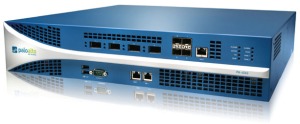The World’s Fastest Next Generation Firewall
Palo Alto Networks, the global leaders in Next Generation Firewall security, have this week released the world’s fastest, most powerful, layer-7 firewall to date. In a bold attempt to outstrip the competition, the PA-7050 boasts unprecedented throughput speeds whist retaining the definitive Palo Alto feature-set (App-ID, User-ID, Content-ID and so on).
New strains of cyber-attack have led to significant firewall advancements in recent years, malicious threats veiled as common applications are increasingly more difficult to detect and have spurred-on a revolution in firewall design. Palo Alto have been at the forefront of this riposte, developing application-specific, Next Generation, firewalls which enable granular security policy enforcement within mission-critical enterprise environments.
Security & Network Performance
Technology advancements continue to raise important considerations for enterprise networking. As the amount of data increases, alongside the number of portable devices, staying on top of network security is an ever-evolving challenge.
Not only must enterprise networks maintain the high levels of security required to deal with today’s menacing cyber-threat landscape, but also be proactive in ensuring that the safeguarding of wireless networks does not lead to throttled speeds and with that, continued workforce productivity.
The PA-7050
Keeping pace with accelerating internet speeds as well as growing data demands is key to what the PA-7050 can offer, and looks to be the defining factor in differentiating the product from other Next Generation Firewalls on the market. Boasting firewall throughput of up to 120 Gbps, the PA-7050 runs the standard PAN-OS operating system and achieves full threat prevention whilst providing high-speed network capabilities.
Having improved both the hardware and software on the PA-7050, Palo Alto Networks claim to have produced their most scalable, flexible and user-friendly firewall yet. Featuring a new chassis design, incorporating eight slots (six of which are for processing and the remaining two for special functions), the monster unit is capable of hosting 24 Million sessions and 750 Thousand connections per second. However, Irrespective of its multi-blade design, the PA-7050 can be operated as a single device, as well as offering support on a per-chassis basis.
More Information
Find out more about the Palo AltoPA-7050 or the other Next Generation Firewalls in the Palo range by calling Ensign on 01929 556 553, or emailing info@ensign-net.co.uk.



